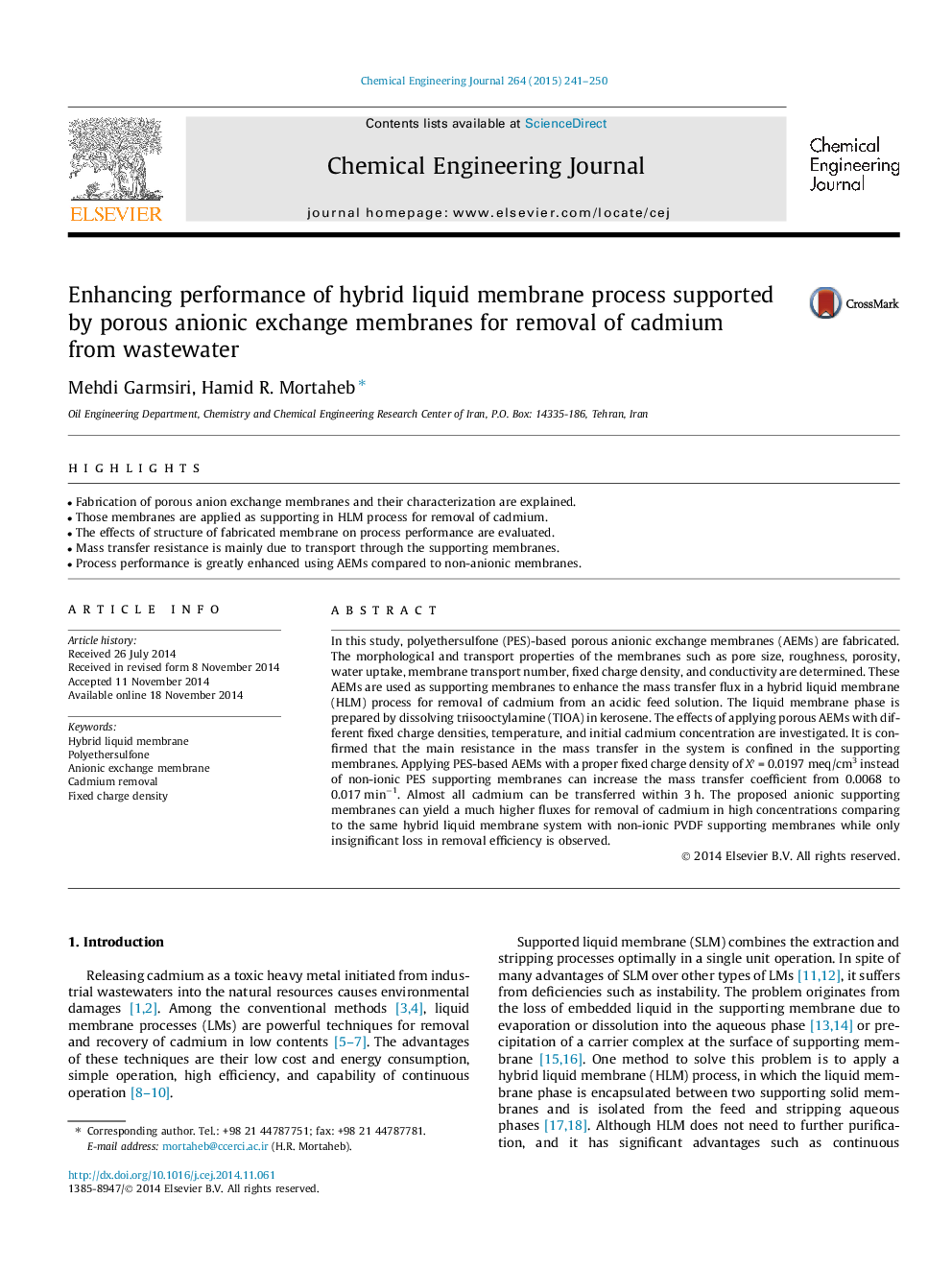| Article ID | Journal | Published Year | Pages | File Type |
|---|---|---|---|---|
| 146841 | Chemical Engineering Journal | 2015 | 10 Pages |
•Fabrication of porous anion exchange membranes and their characterization are explained.•Those membranes are applied as supporting in HLM process for removal of cadmium.•The effects of structure of fabricated membrane on process performance are evaluated.•Mass transfer resistance is mainly due to transport through the supporting membranes.•Process performance is greatly enhanced using AEMs compared to non-anionic membranes.
In this study, polyethersulfone (PES)-based porous anionic exchange membranes (AEMs) are fabricated. The morphological and transport properties of the membranes such as pore size, roughness, porosity, water uptake, membrane transport number, fixed charge density, and conductivity are determined. These AEMs are used as supporting membranes to enhance the mass transfer flux in a hybrid liquid membrane (HLM) process for removal of cadmium from an acidic feed solution. The liquid membrane phase is prepared by dissolving triisooctylamine (TIOA) in kerosene. The effects of applying porous AEMs with different fixed charge densities, temperature, and initial cadmium concentration are investigated. It is confirmed that the main resistance in the mass transfer in the system is confined in the supporting membranes. Applying PES-based AEMs with a proper fixed charge density of X′ = 0.0197 meq/cm3 instead of non-ionic PES supporting membranes can increase the mass transfer coefficient from 0.0068 to 0.017 min−1. Almost all cadmium can be transferred within 3 h. The proposed anionic supporting membranes can yield a much higher fluxes for removal of cadmium in high concentrations comparing to the same hybrid liquid membrane system with non-ionic PVDF supporting membranes while only insignificant loss in removal efficiency is observed.
